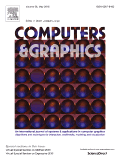
Simon Clavet
Ubisoft, Montreal
Motion Matching for Realistic Animation in “For Honor”
Motion Matching is a brute force approach for creating responsive character movement from a large database of mocap data. We adopt a declarative animation philosophy, where instead of placing small animations in a big structure, we place event markup on top of long unstructured animations. This manual markup is necessary for logical information that can’t be inferred automatically, like stances and attack types. For navigation, we don’t have to manually organize transition animations like starts, stops, and turns. We just capture 5 or 10 minutes of a person running around and import it directly into the engine. At runtime, we continuously find the frame that best matches the current pose, the desired future trajectory and the properties of desired events. We simply transition with a small blend time to this winning place in the data. The resulting motion is almost indistinguishable from a raw mocap sequence, while being responsive enough for comfortable control.

Michiel van de Panne
Department of Computer Science
University of British Columbia
Learning Motion Skills
Why is it so difficult to develop simulated characters and robots that can exhibit the skill and dexterity we see in nature? How might we capture skills instead of capturing motions? In this talk I’ll briefly review the long road to making tangible progress on these topics. The different perspectives of the animation, robotics, biomechanics, and AI communities on these problems are particularly interesting to consider. I’ll give an overview of some of our recent and ongoing work towards making physics-based characters a practical tool for use a wide range of applications, including the use of deep networks.
Bio:
Michiel van de Panne is a Professor in the Department of Computer Science at UBC, with research interests that span computer graphics, computer animation, and robotics, with a strong focus on modeling human and animal motion and the motor skills that underly their movement. He recently completed 10 years as a Tier 2 Canada Research Chair in Computer Graphics and Animation at UBC. In 2002, he co-founded the ACM/Eurographics Symposium on Computer Animation (SCA), the leading forum dedicated to computer animation research, and has served for many years on its steering committee. He has served as Associate Editor of ACM Transactions on Graphics and regularly serves on program committees for ACM SIGGRAPH and SCA. He has served as co-chair for CAS 1997, SCA 2002, Graphics Interface 2005, SBIM 2007, and SCA 2011. His research has been recognized with an NSERC Discovery Accelerator Supplement and grants from NSERC, GRAND, Adobe, and MITACS. He recently served as Associate Head for Research and Faculty Affairs. His students have gone on to faculty positions at CMU, UCLA, the National University of Singapore, University College Dublin, as well as INRIA, CNRS, Google, NVIDIA, and numerous companies related to games and visual-effects. His work with M.Sc. student Ivan Neulander helped form the basis of the Rhythm & Hues hair rendering pipeline for The Chronicles of Narnia and other films.

Mark Walsh
Motional A.i.
Creating Believable, Warm, Interactive Characters
Bio:
Mark Walsh is founder of Motional A.i. and creator of Gary the Gull, the first interactive character in VR. With 18 years at Pixar, Mark was the writer-director of Partysaurus Rex and Animation Lead on Academy Award winners Ratatouille and Finding Nemo – specifically helping create the character of Dory.
After contributing to the Incredibles, Bug’s Life, Monsters Inc, and the Good Dinosaur, Mark created ads for Up, Toy Story 3, Visa, Aflac, Target, Dolby, & Peugeot.
Now with Motional, Mark is bringing Pixar empathy, & character to A.i.









